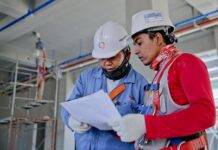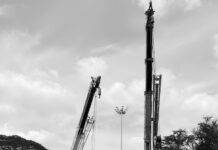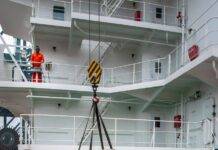
Types of Cranes Used in Construction
Types of Cranes Used in Construction : Cranes play a pivotal role in the construction industry, simplifying the movement of heavy materials, equipment, and structures. These towering machines are essential for executing various construction projects, from high-rise buildings to infrastructure development. In this article, we will delve into the different types of cranes commonly used in construction, their working principles, and the importance of safety measures in crane operations.
1. Introduction
Construction projects of all scales rely on cranes for lifting and transporting heavy loads. The selection of the right type of crane is crucial to ensure efficiency and safety. This article explores the diverse world of cranes and their applications in construction.
2. The Importance of Cranes in Construction
Cranes are the backbone of any construction site, enabling the efficient handling of materials and equipment. Their significance lies in their ability to lift and position heavy items that would be otherwise impossible to move manually. Cranes make construction faster, safer, and more cost-effective.
3. Common Types of Cranes
Mobile Cranes
Mobile cranes are versatile and widely used in construction. They are mounted on rubber tires, making them easy to transport to various locations. Mobile cranes are known for their flexibility and can handle a wide range of tasks.
Tower Cranes
Tower cranes are a common sight on large construction projects. They offer excellent height and lifting capacity and are anchored to the ground. These cranes are essential for high-rise building construction.
Crawler Cranes
Crawler cranes are designed for stability and mobility on uneven terrain. They feature tracks that allow them to move smoothly on soft or rugged ground, making them ideal for infrastructure projects.
Overhead Cranes
Overhead cranes are typically used indoors, particularly in manufacturing and warehouses. They consist of a horizontal beam that moves along a runway system, providing efficient material handling in confined spaces.
4. Specialty Cranes
Rough Terrain Cranes
Rough terrain cranes are equipped with large, sturdy tires designed to operate in off-road conditions. These cranes are often used in remote construction sites where regular vehicles struggle to navigate.
Telescopic Cranes
Telescopic cranes have a boom with multiple sections that extend or retract. They are excellent for precision lifting and are commonly used in the installation of heavy machinery.
Truck-Mounted Cranes
These cranes are mounted on trucks, offering mobility and speed in various construction tasks. They can quickly move from one site to another, making them a valuable asset for contractors on the move.
5. How Cranes Work
Crane Components
Cranes consist of several key components, including the boom, hook, counterweight, and control systems. The careful coordination of these components is essential for safe and efficient operation.
Crane Operations
Operating a crane requires skill and training. Crane operators follow precise procedures, such as load calculations, boom positioning, and safety checks, to ensure smooth and safe lifting.
6. Factors to Consider When Choosing a Crane
Selecting the right crane depends on factors like the type of construction, location, and lifting requirements. Contractors must consider these elements to optimize efficiency and safety.
7. Safety Measures in Crane Operations
Safety is paramount in crane operations. Proper training, regular inspections, and adherence to safety protocols are essential to prevent accidents and ensure the well-being of all personnel on the construction site.
8. Maintenance and Inspection
Cranes require regular maintenance and inspection to ensure they remain in optimal working condition. Neglecting these aspects can lead to equipment failure and safety hazards.
9. Conclusion
Cranes are the workhorses of the construction industry, offering the ability to lift and move heavy objects with precision and efficiency. Choosing the right crane for a project and ensuring its safe operation is crucial for the success of any construction endeavor.
Rigging Hazards and Precautions
How to Calculate Crane Load Capacity Without a Load Chart
How To Calculate Crane Load Capacity?
10. FAQs
1. What are the primary uses of mobile cranes in construction?
Mobile cranes are versatile and are used for a wide range of tasks, including lifting heavy materials, machinery, and equipment. They are essential in construction projects where flexibility is required.
2. How do operators ensure the safety of crane operations?
Operators must follow safety protocols, conduct regular inspections, and undergo thorough training. These measures are in place to prevent accidents and ensure the well-being of all personnel on the construction site.
3. What is the primary advantage of tower cranes in high-rise construction?
Tower cranes offer exceptional height and lifting capacity, making them ideal for high-rise building construction. Their anchored structure provides stability and reach.
4. Are rough terrain cranes suitable for all construction sites?
Rough terrain cranes are designed for off-road conditions and remote sites. While versatile, they may not be necessary on well-paved urban construction sites.
5. How often should cranes undergo maintenance and inspection?
Cranes should undergo regular maintenance and inspection, typically in accordance with the manufacturer’s recommendations. Neglecting this can lead to equipment failure and potential safety hazards.
In this comprehensive guide, we’ve explored the diverse world of cranes in construction, from common types to specialty machines and the essential safety measures required for smooth operations. Selecting the right crane and ensuring its proper use are vital for the success of any construction project.





















